Introduction to Charcoal Louvers
Charcoal louvers are architectural features characterized by horizontal or vertical slats made from charcoal or charcoal-finished materials. These slats are typically arranged to create a pattern, allowing for airflow, light filtration, or purely decorative purposes. The name “charcoal louvers” stems from their dark, smoky appearance, which adds a sophisticated and modern touch to any space.
Louvers have a long history in architecture, originating as functional elements to control ventilation and light. Charcoal louvers bring a contemporary twist to this traditional concept, blending the practicality of louver systems with a sleek, industrial aesthetic. They are particularly favored in minimalist and modern design styles, where clean lines and muted tones dominate.
Charcoal louvers have become a striking and versatile feature in contemporary wall design. These elements combine functionality with aesthetic appeal, making them a popular choice for both interior and exterior applications.
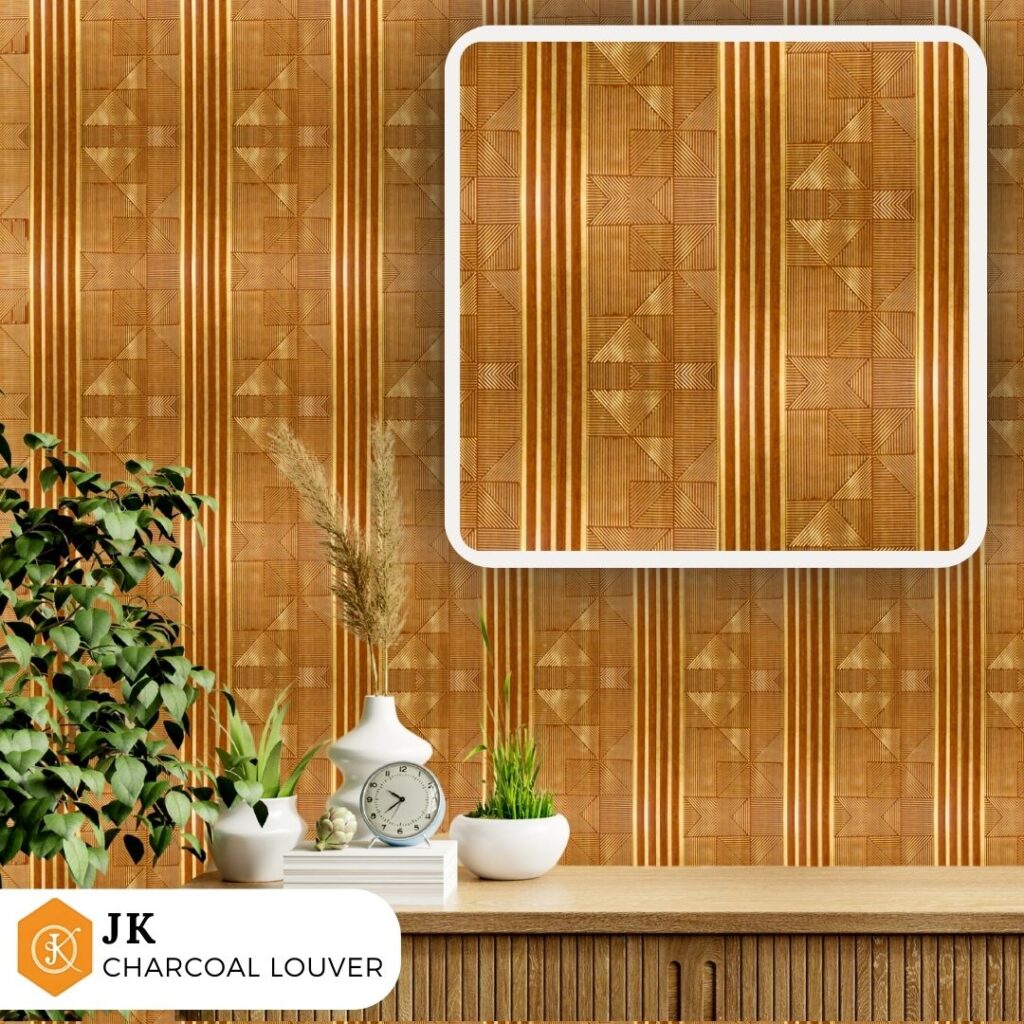
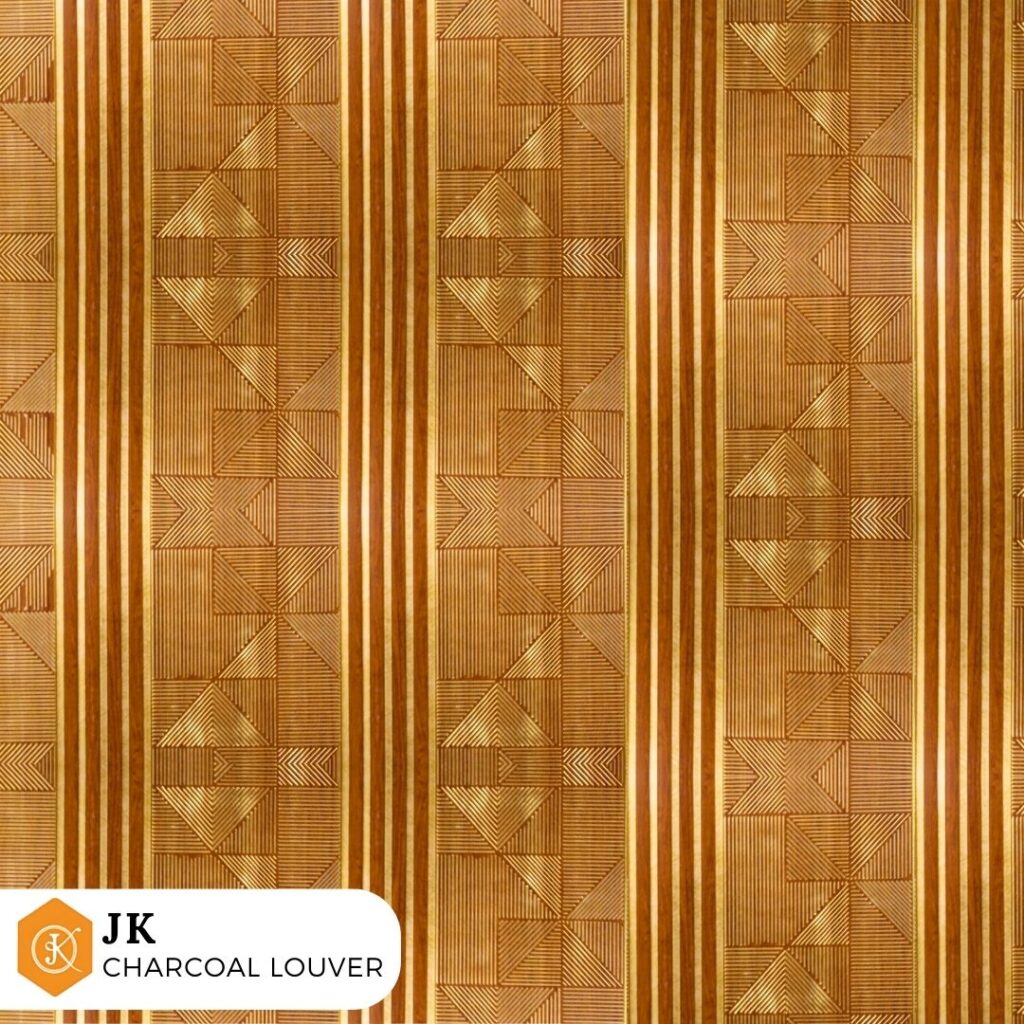
Construction and Design Variations
Charcoal louvers can be installed in various configurations, depending on their intended use and the overall design aesthetic. Some common types include:
Modular Systems: Modular louver panels are pre-fabricated and easy to install. These systems allow for quick customization and replacement, making them a practical choice for large-scale projects.
Fixed Louvers: These are stationary slats installed at a specific angle to optimize light and airflow while maintaining privacy. Fixed louvers are commonly used in exterior facades and room dividers.
Adjustable Louvers: These louvers can be rotated to control the amount of light and air entering a space. Adjustable systems are ideal for spaces where flexibility is required, such as patios or sunrooms.
Decorative Panels: In some cases, charcoal louvers are purely decorative, arranged in intricate patterns or artistic designs to enhance the visual appeal of a wall.
Vertical vs. Horizontal Louvers: The orientation of the louvers significantly impacts the design. Vertical louvers create a sense of height and elegance, while horizontal louvers provide a wider, more expansive feel.
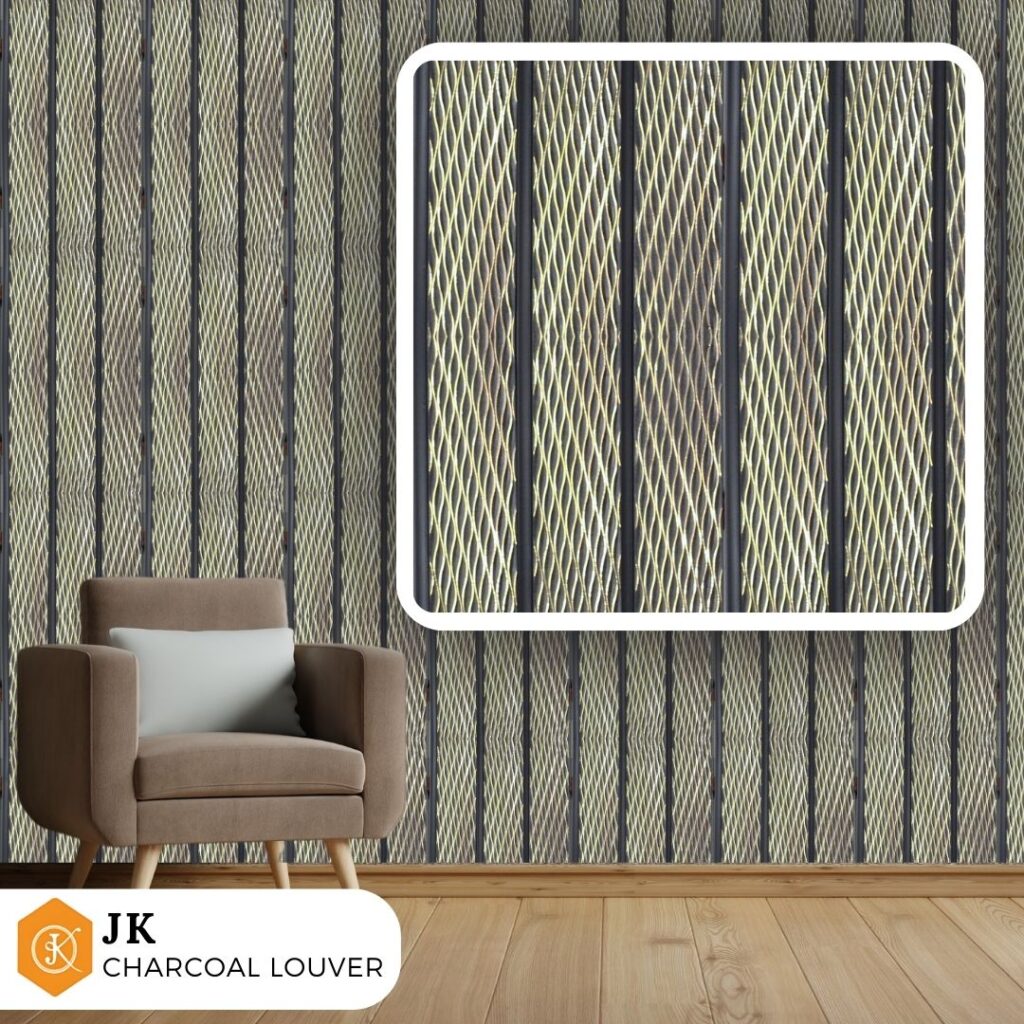
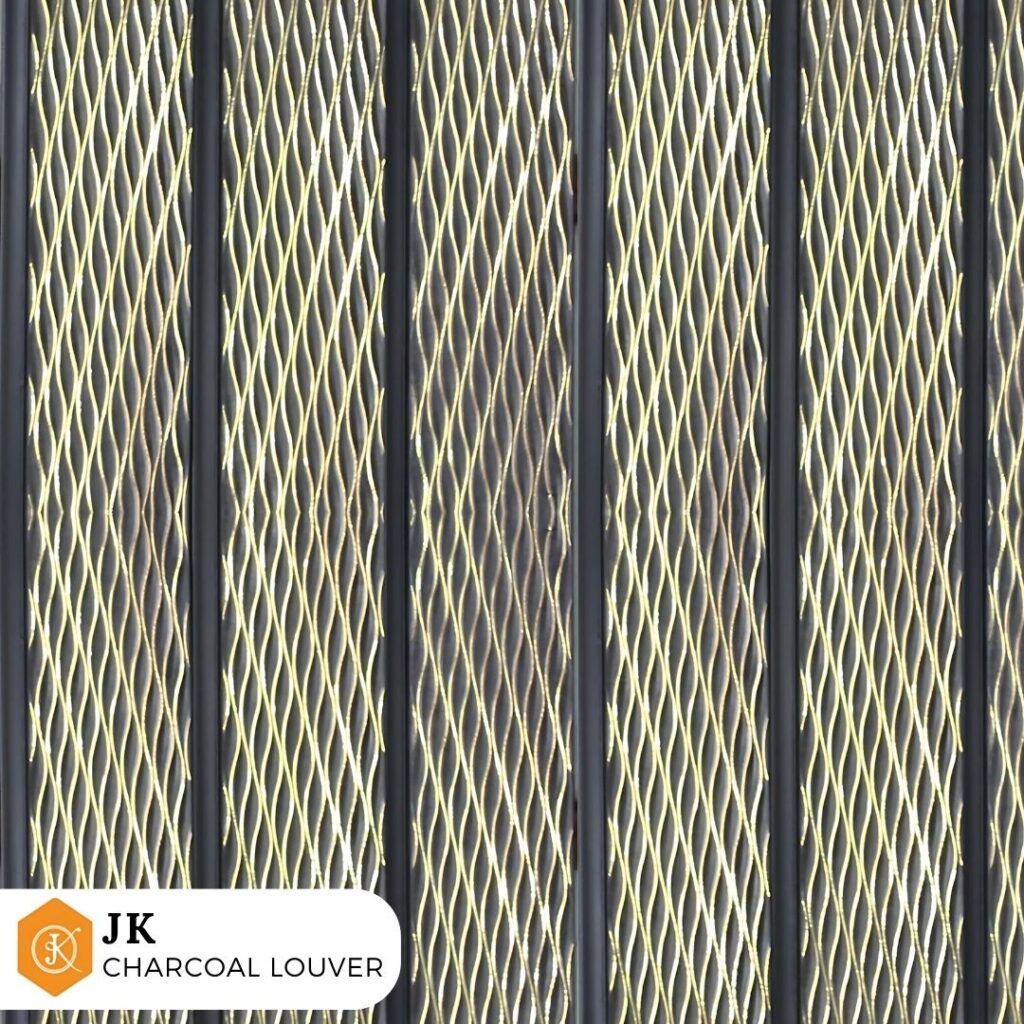
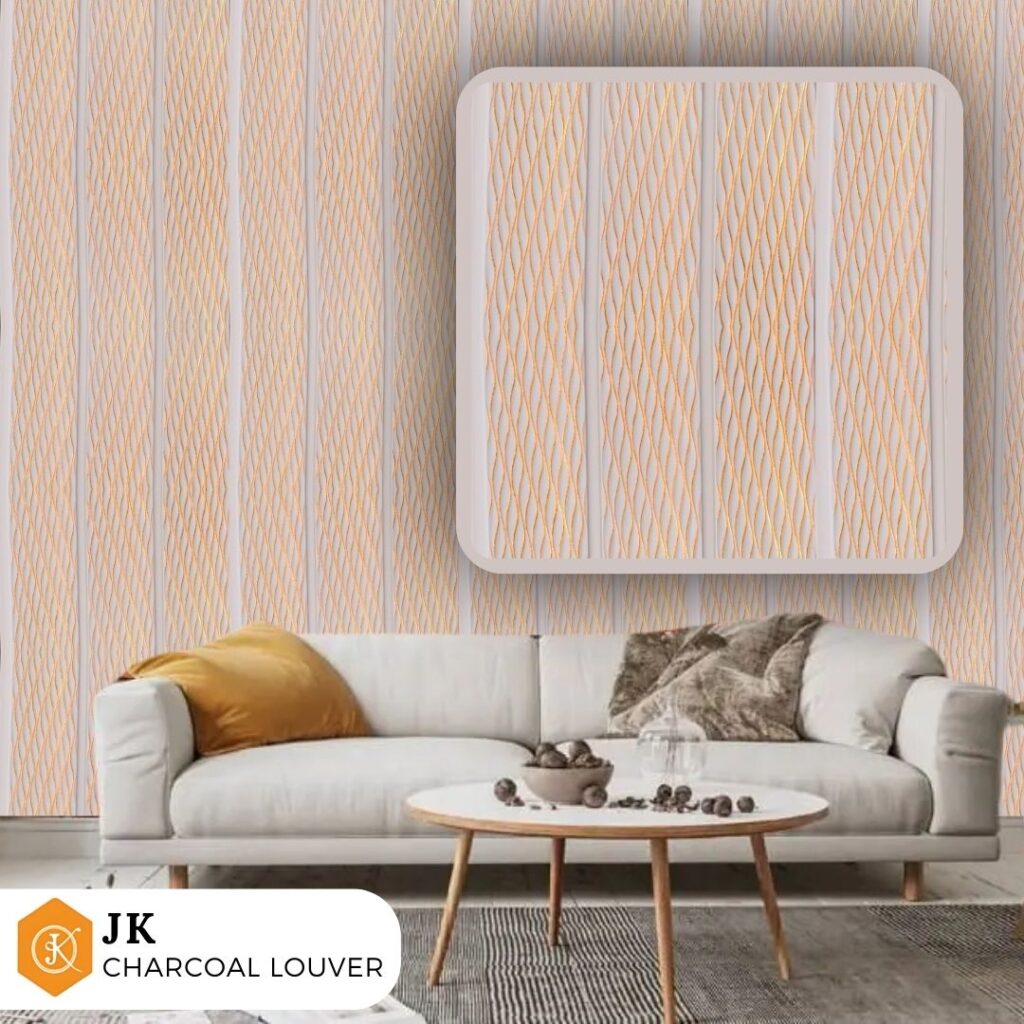
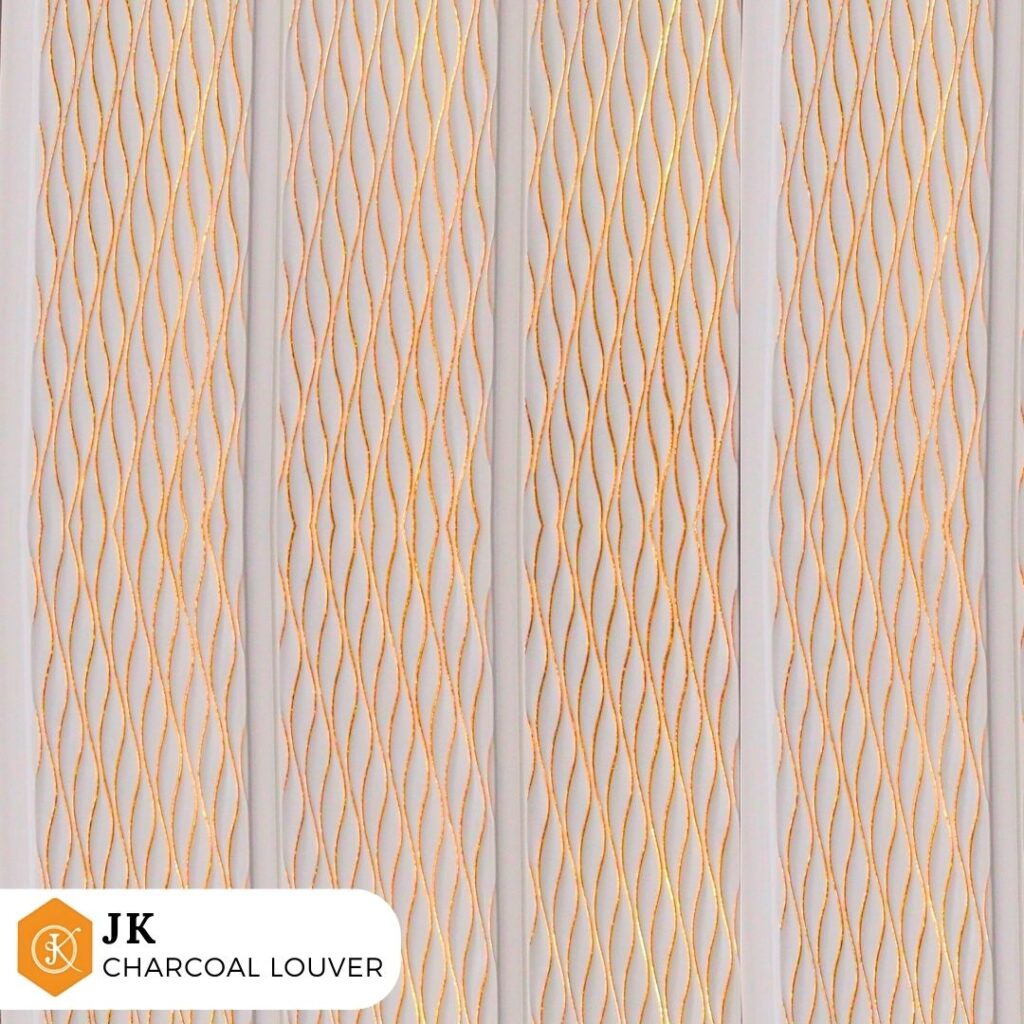
Materials Used in Charcoal Louvers
PVC and UPVC: Lightweight and versatile, PVC and UPVC are used for creating charcoal louver designs that are resistant to moisture and UV rays, making them ideal for outdoor applications.
Natural Charcoal: Some louvers are made from compressed charcoal blocks, which offer a natural, textured look. These materials are eco-friendly and have unique properties such as odor absorption and humidity regulation.
Charcoal-Finished Wood: Wood treated with a charcoal finish, often achieved through techniques like Shou Sugi Ban (a traditional Japanese method of wood charring), provides a rich, dark hue while maintaining the warmth of natural wood grain.
Metal with Charcoal Coating: Aluminum or steel slats coated with a charcoal finish are common for durability and weather resistance. These materials are lightweight, long-lasting, and suitable for both interior and exterior use.
Composite Panels: Composite materials, such as fiber cement or high-pressure laminates, are often used to mimic the appearance of charcoal louvers. These panels are cost-effective and require minimal maintenance.
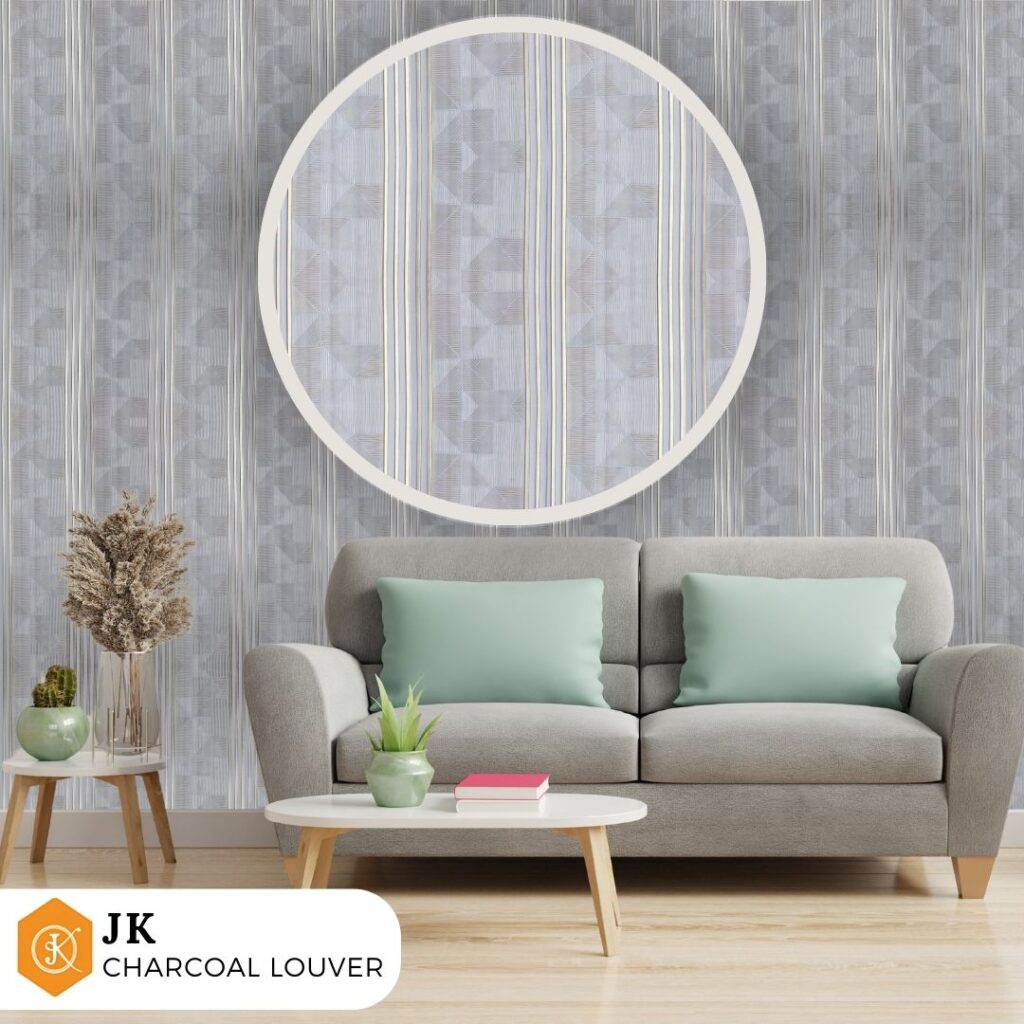
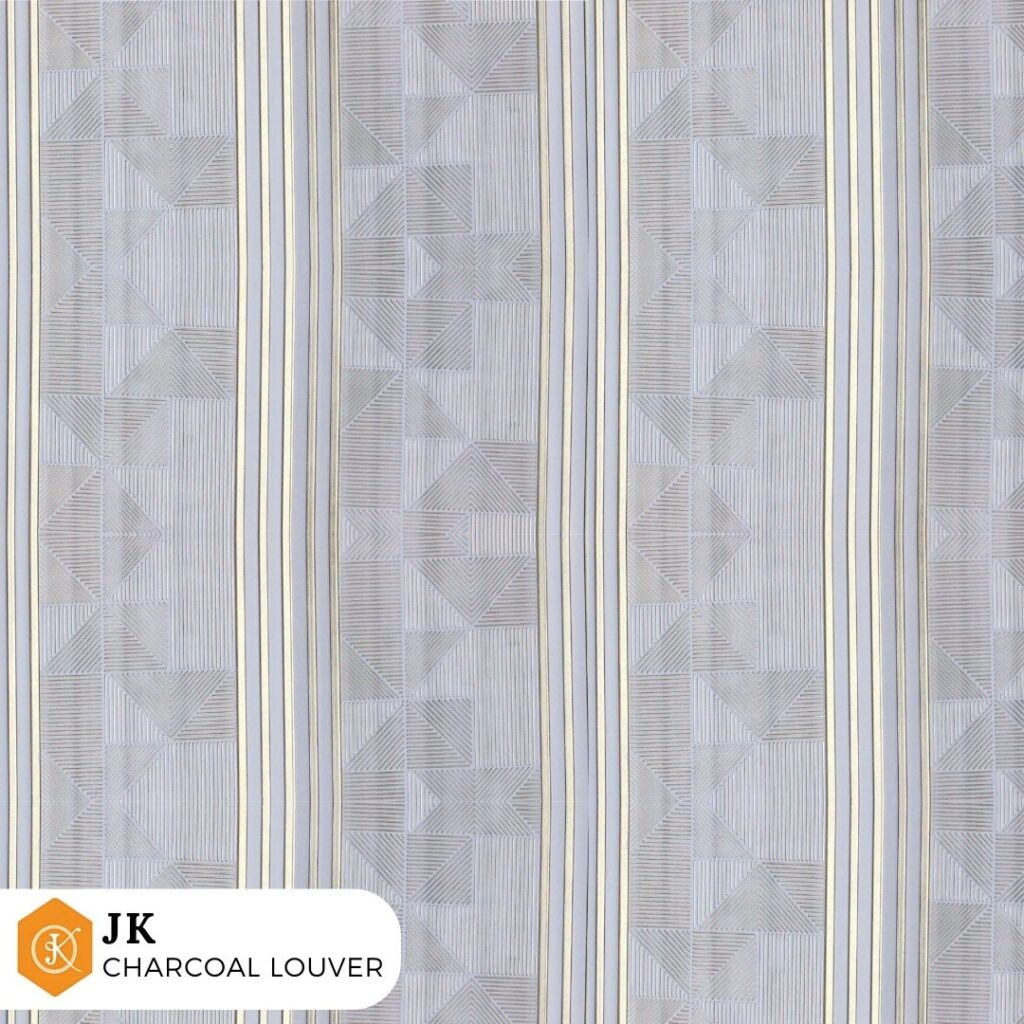
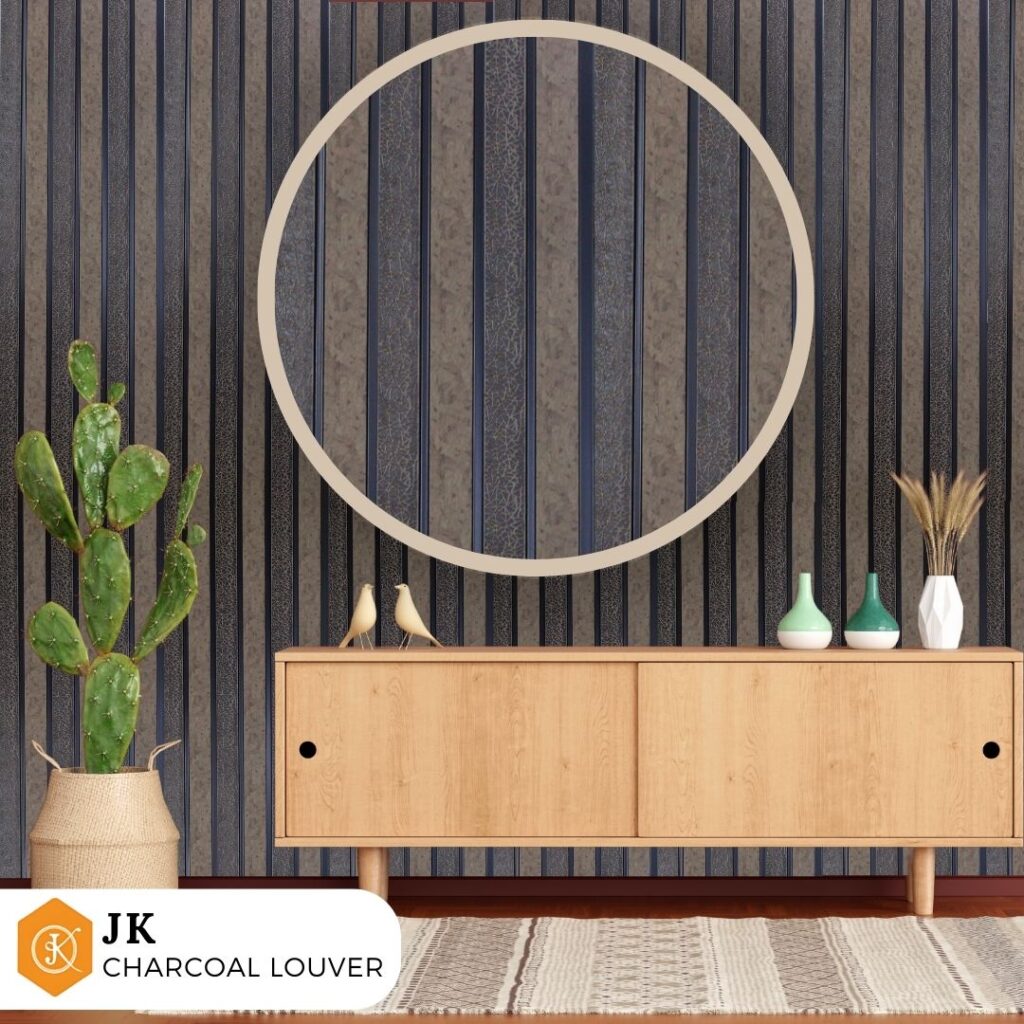
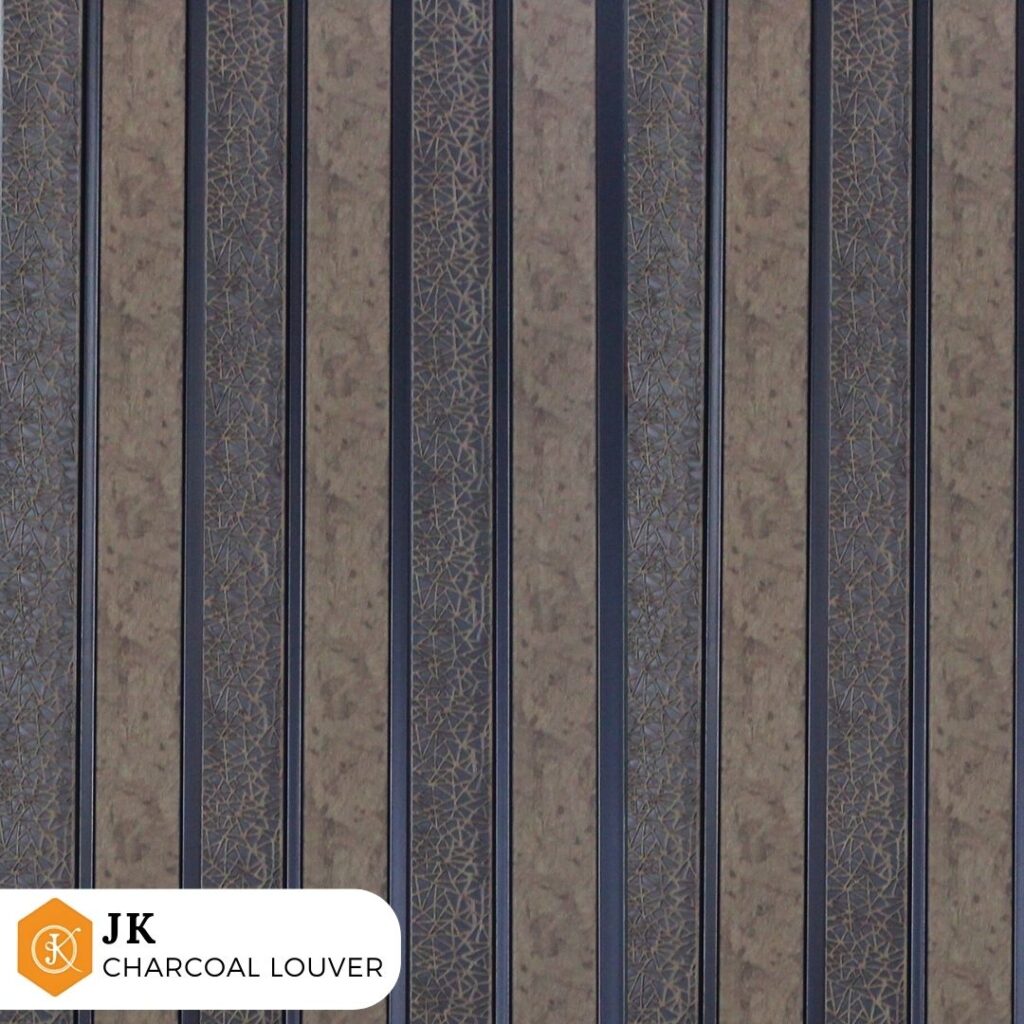
Benefits of Charcoal Louvers in Wall Design
Versatility: Charcoal louvers can be adapted to a wide range of architectural styles, from industrial to contemporary. They can be used in various settings, including residential, commercial, and public spaces.
Aesthetic Appeal: Charcoal louvers add a dramatic and sophisticated look to any space. Their dark tones create a striking contrast against lighter materials, enhancing the overall visual impact of a design.
Natural Ventilation: Louvers are designed to facilitate airflow, making them an excellent choice for improving indoor air quality. They help reduce the need for mechanical ventilation systems, contributing to energy efficiency.
Light Control: By controlling the angle of the slats, charcoal louvers can filter sunlight and reduce glare. This feature is particularly beneficial in areas with strong natural light, helping to create a comfortable indoor environment.
Privacy: Louvers offer privacy without completely blocking the view or airflow. This makes them ideal for spaces such as office partitions, garden fences, and balcony enclosures.
Durability: Materials used in charcoal louver construction are typically resistant to weather, UV rays, and corrosion. This ensures longevity and reduces maintenance requirements.
Eco-Friendly: Many charcoal louver designs incorporate sustainable materials and processes, such as reclaimed wood or low-VOC coatings. Additionally, their ability to improve natural ventilation can reduce energy consumption.
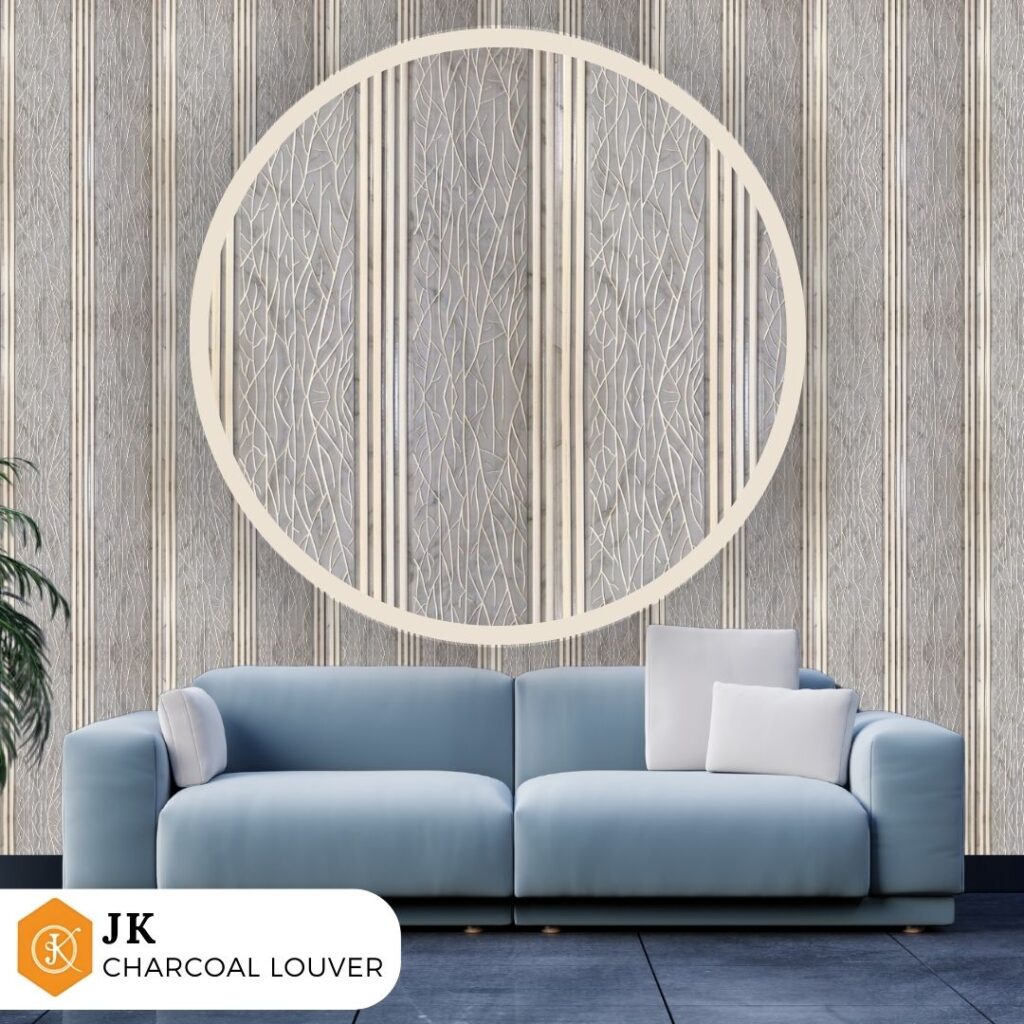
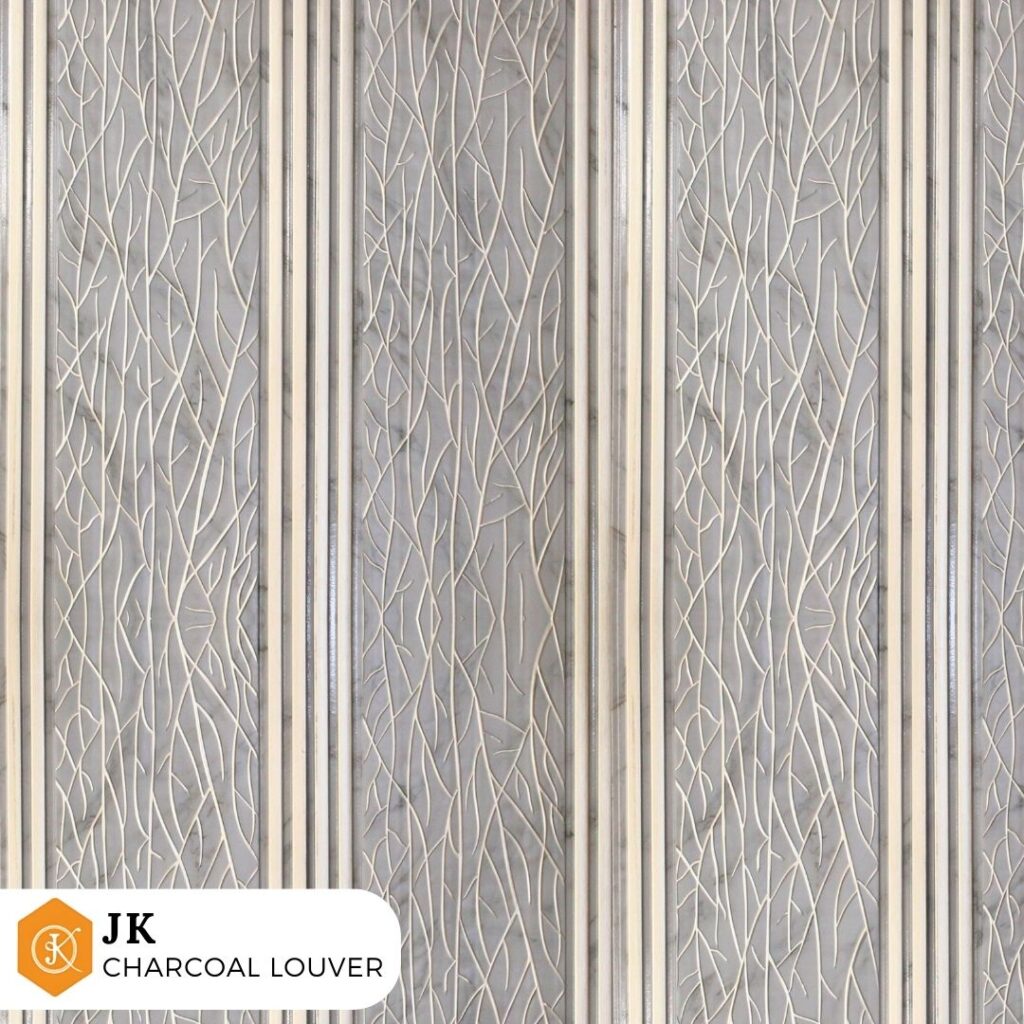
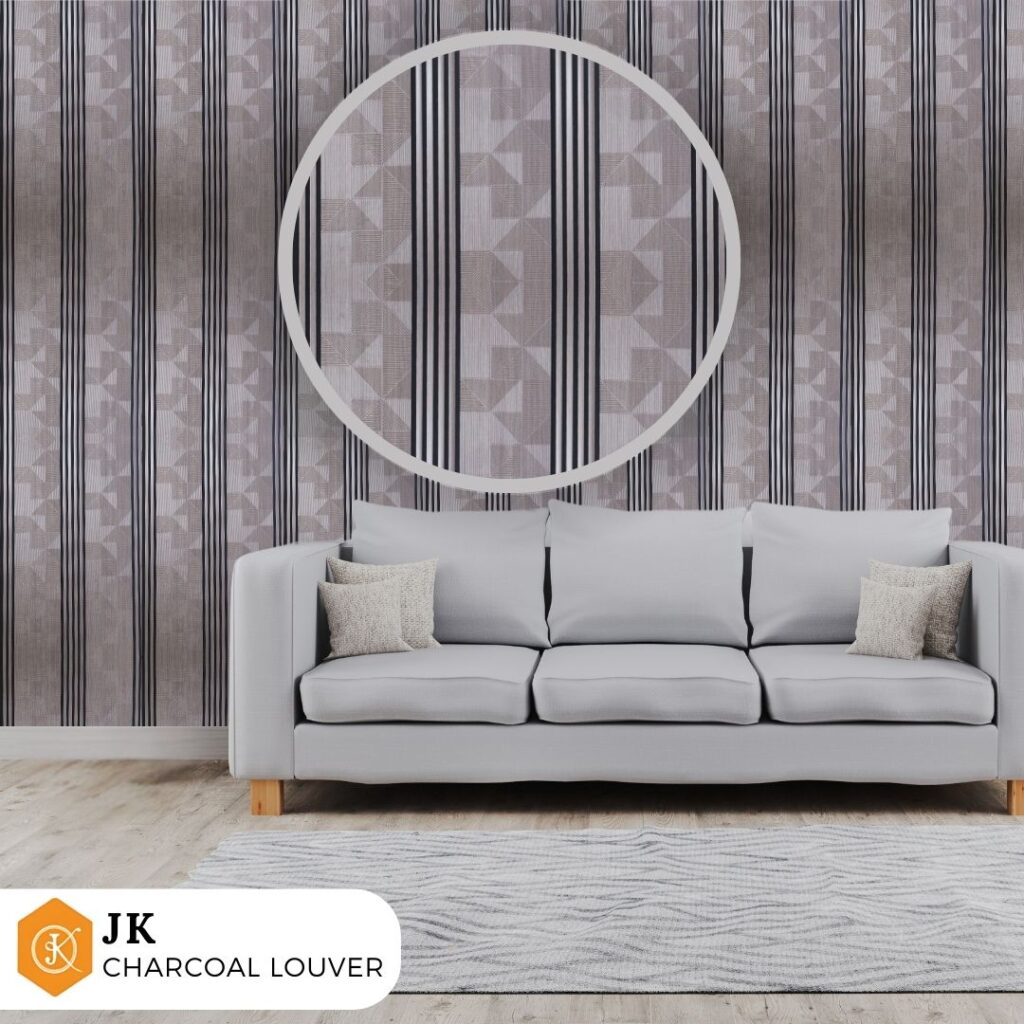
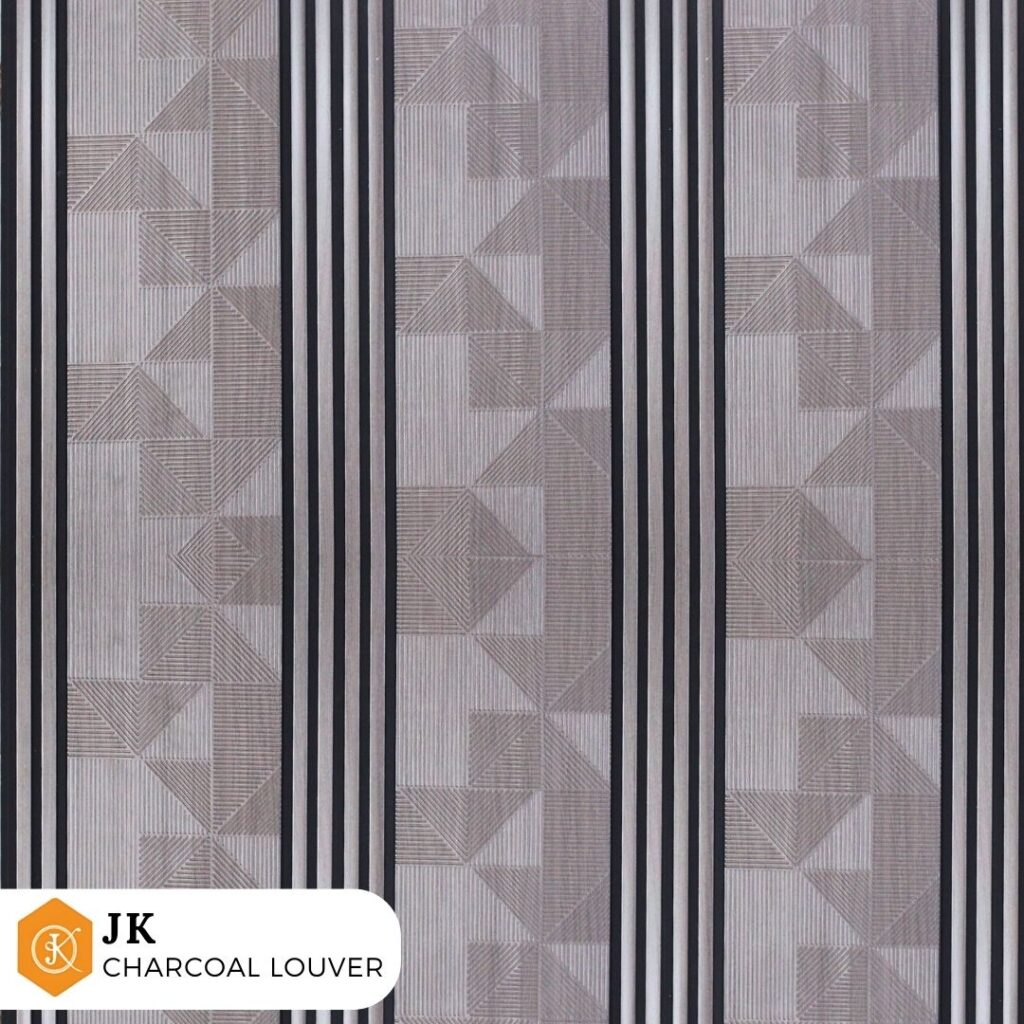
Challenges and Considerations
While charcoal louvers offer numerous benefits, there are some challenges to consider:
Environmental Impact: While many louver materials are sustainable, some may involve energy-intensive manufacturing processes. Opting for eco-friendly options can mitigate this issue.
Cost: High-quality materials and intricate designs can be expensive. Budget considerations should be taken into account during the planning phase.
Installation Complexity: Depending on the design and material, louver installation may require specialized skills and equipment.
Maintenance: Although some materials are low-maintenance, others, like natural charcoal or wood, require regular care to prevent deterioration.
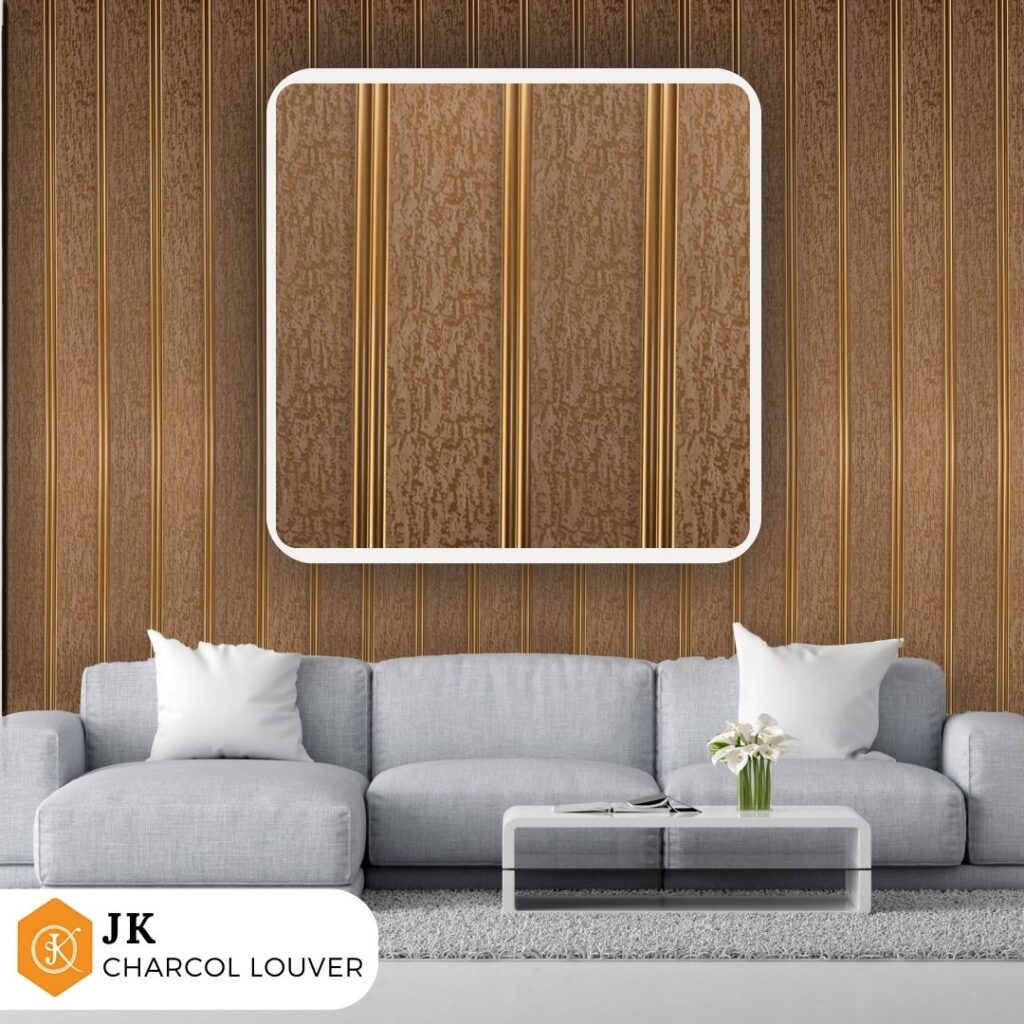
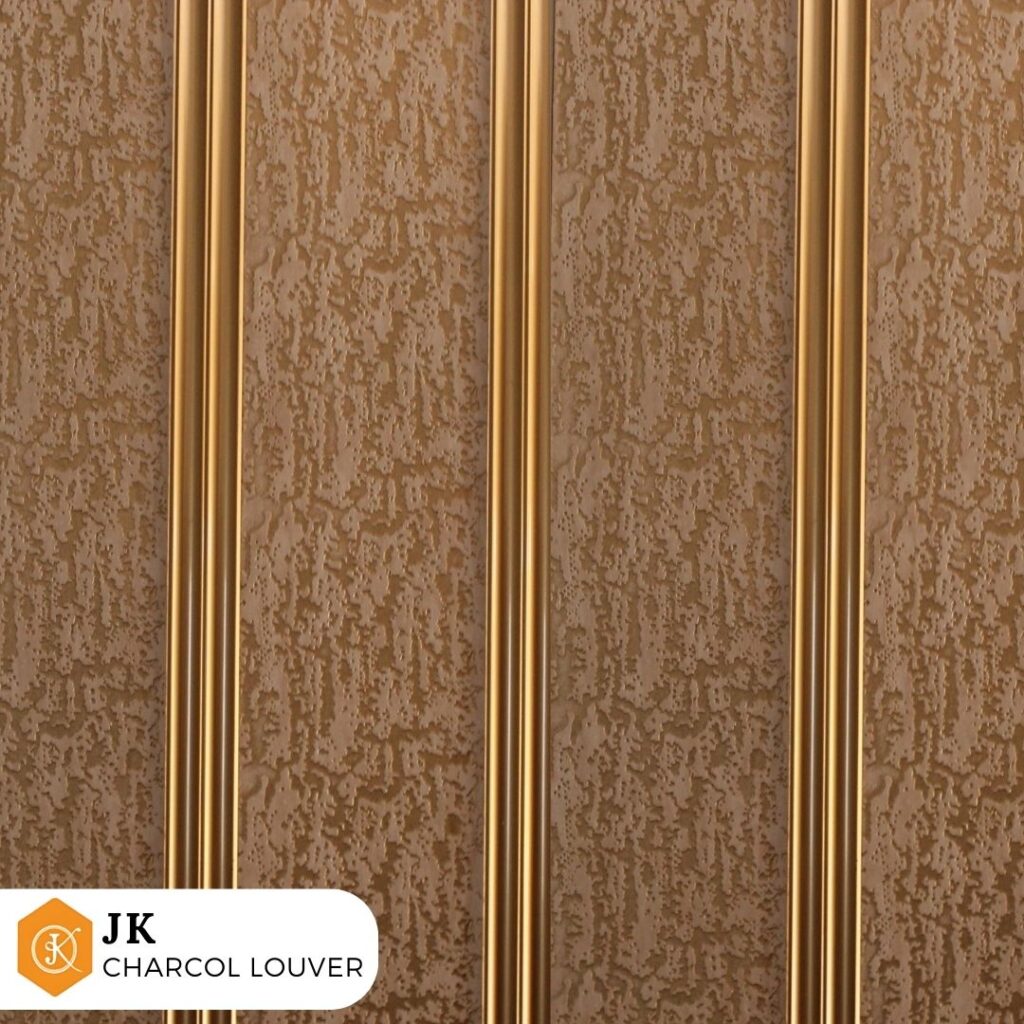
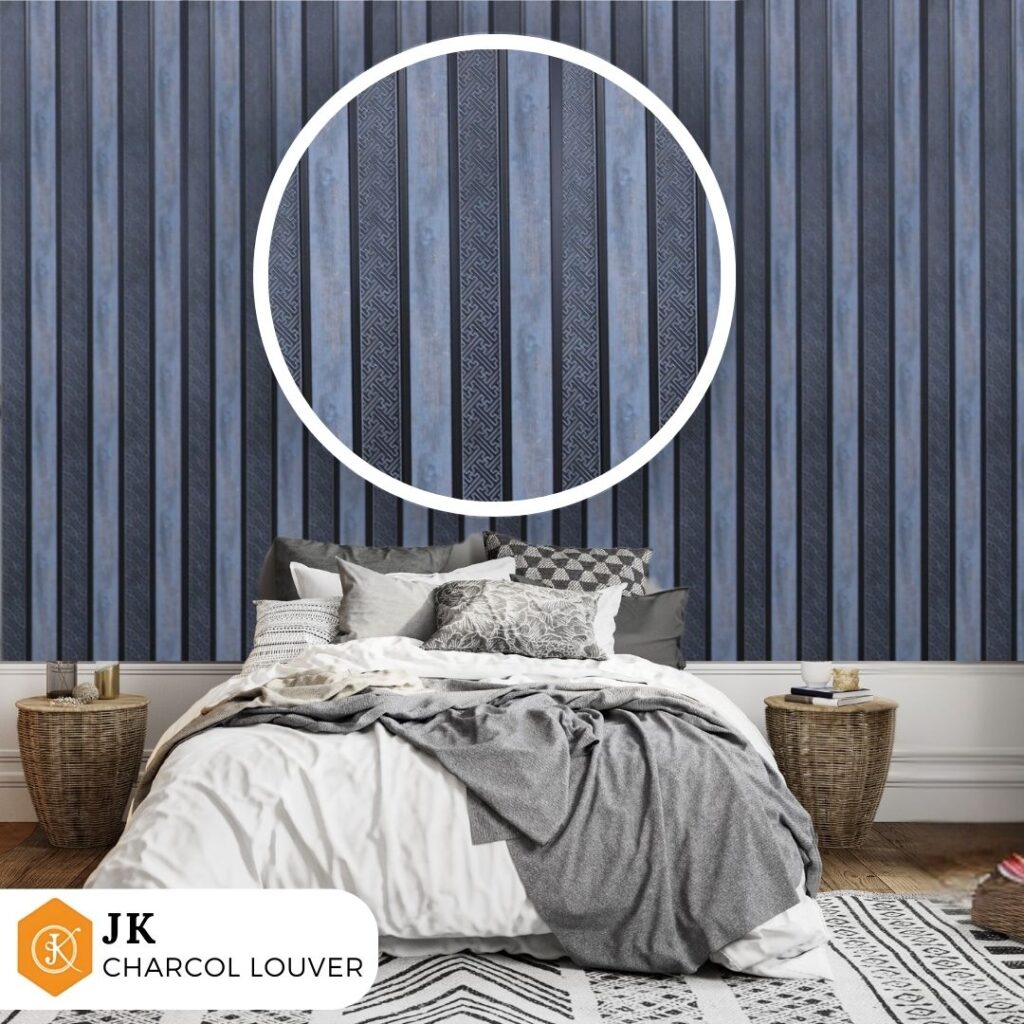
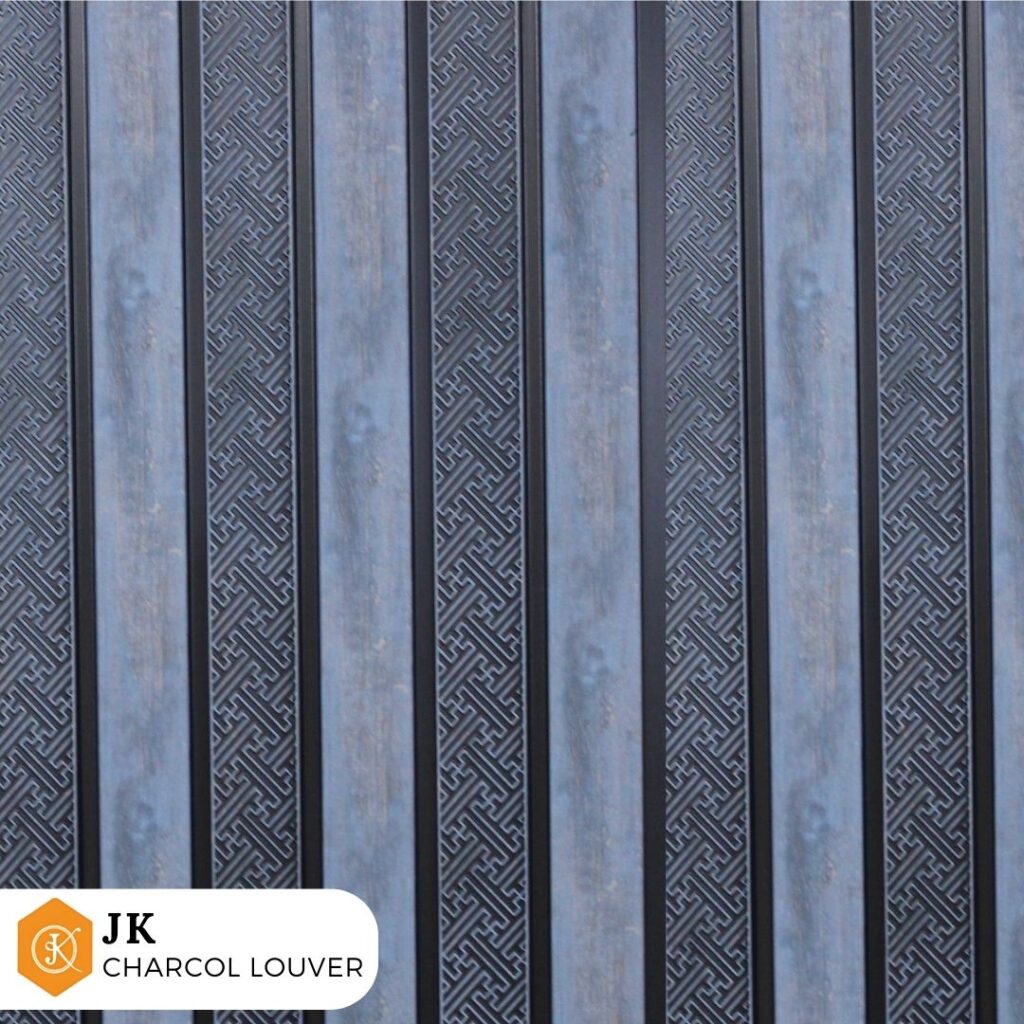
Applications of Charcoal Louvers
Signage and Branding: Custom louver panels can incorporate logos or branding elements, making them a creative choice for commercial properties.
Exterior Facades: Charcoal louvers are often used as cladding for building exteriors. They add depth and texture to the facade while providing functional benefits such as shading and ventilation.
Interior Walls: Inside buildings, charcoal louvers are used as feature walls or room dividers. They create a sense of separation without completely isolating spaces, maintaining an open and airy feel.
Ceiling Panels: Horizontal louver designs can be extended to ceilings, adding a unique architectural detail. This application is common in modern offices, retail spaces, and hospitality settings.
Window Screens: Louvers can be installed over windows to reduce heat gain and glare. Adjustable louver systems allow for precise control of light and airflow.
Fencing and Enclosures: Charcoal louvers are an attractive option for garden fences, pool enclosures, and outdoor seating areas. They provide privacy while blending seamlessly with natural surroundings.
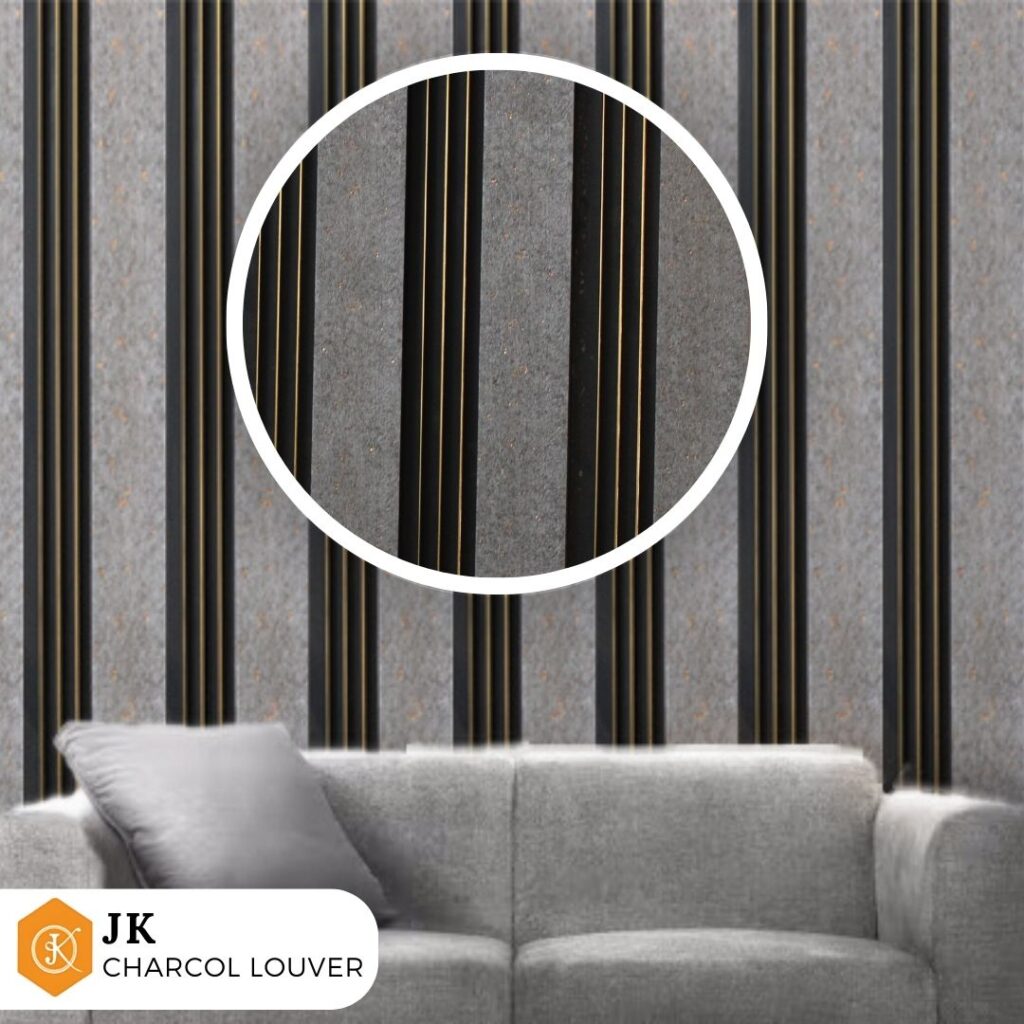
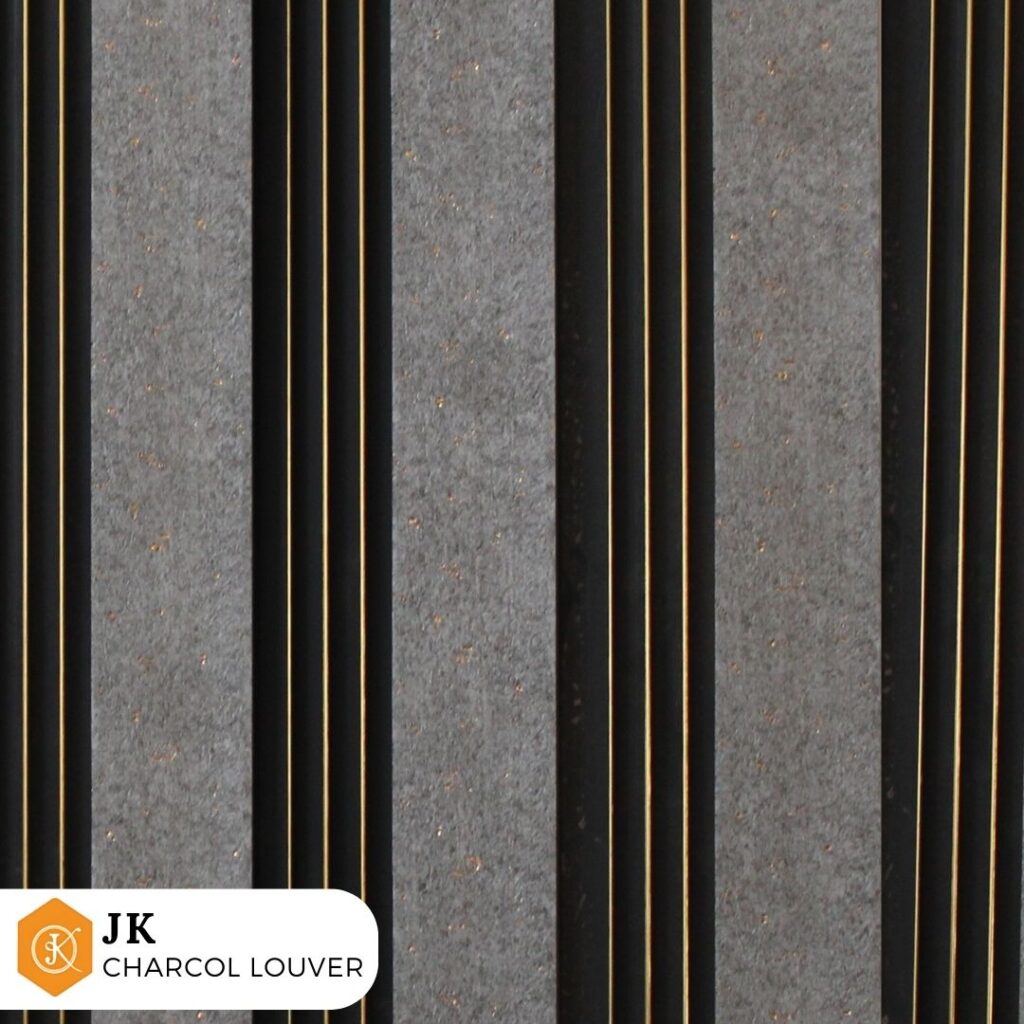
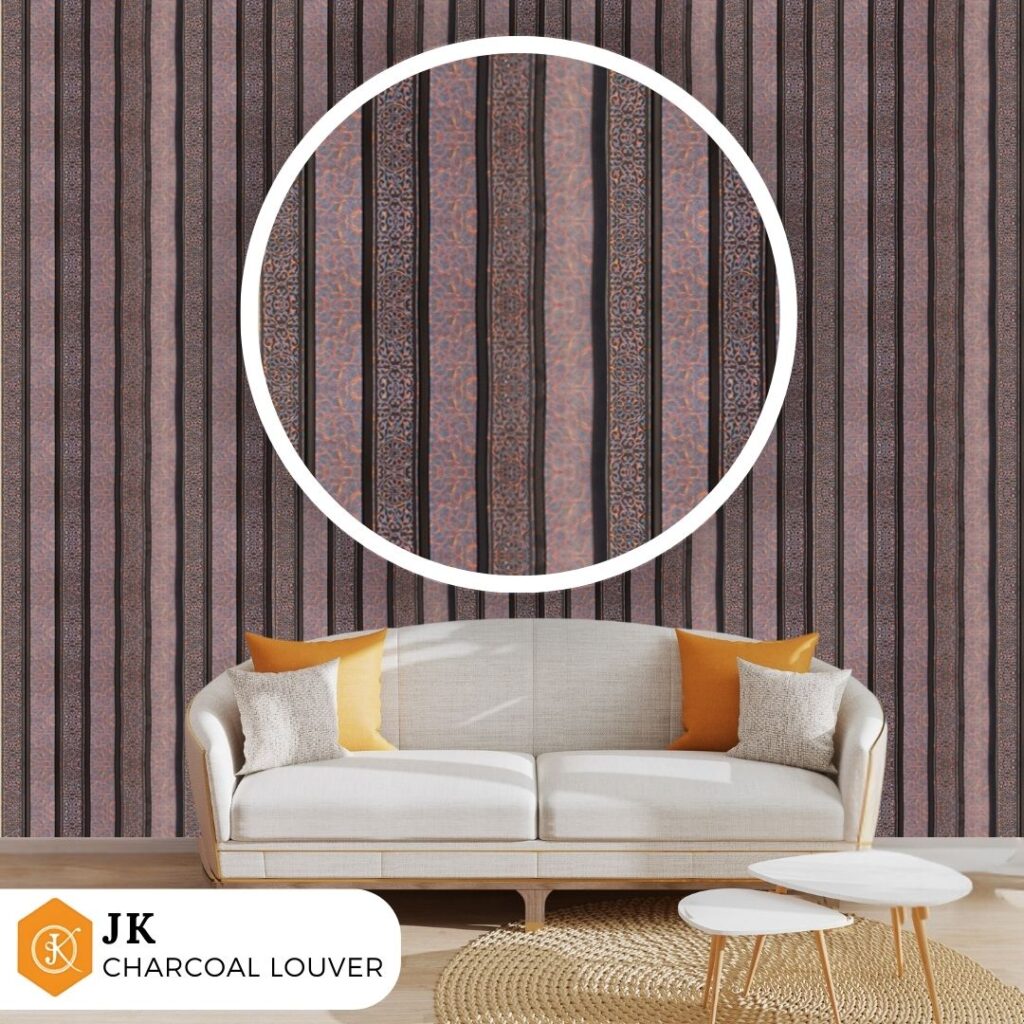
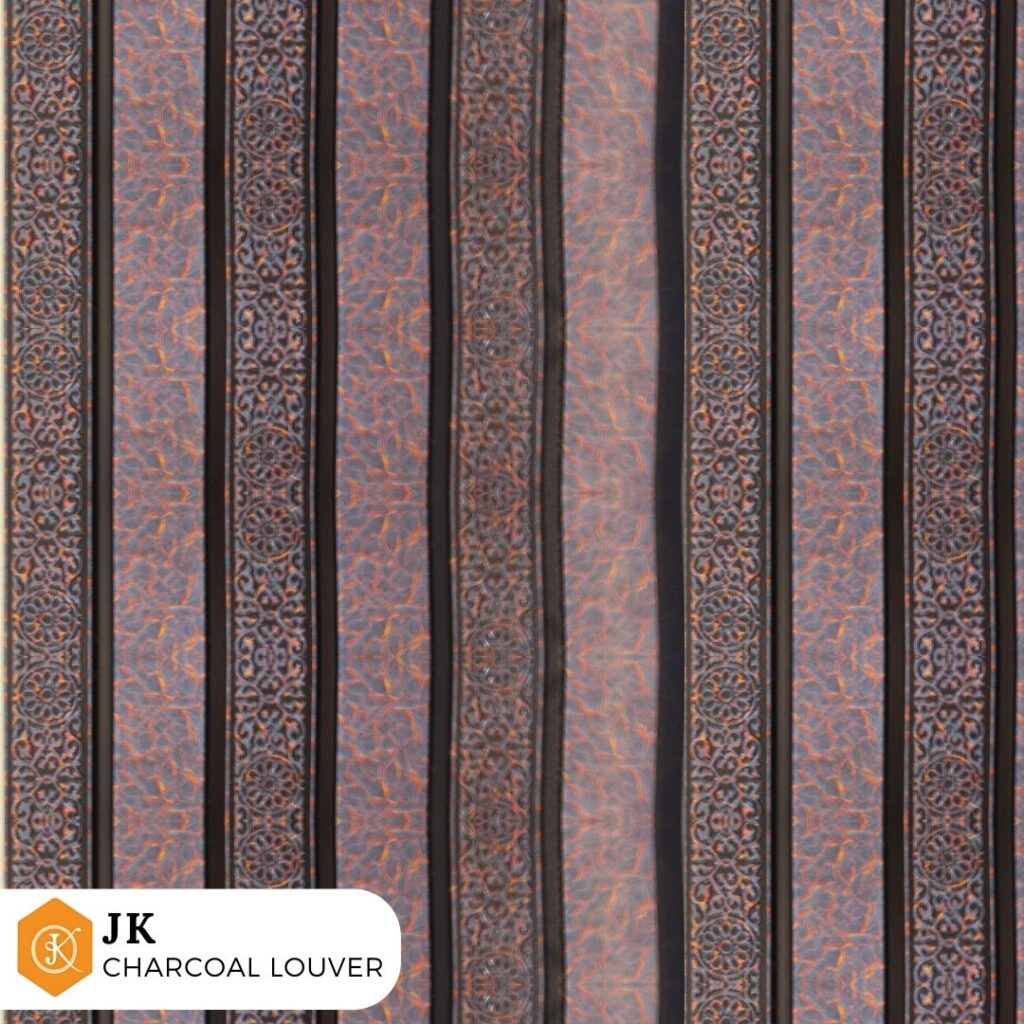
Maintenance and Care
The maintenance of charcoal louvers depends on the material used:
Composite and PVC Louvers: These materials are highly resistant to moisture and stains, making them easy to clean with standard household cleaners.
Natural Charcoal: Regular dusting and occasional sealing are required to maintain the appearance and durability of natural charcoal.
Charcoal-Finished Wood: Periodic reapplication of protective finishes, such as oils or varnishes, helps preserve the wood’s integrity and color.
Metal Louvers: These are low-maintenance, requiring only occasional cleaning with mild soap and water to prevent dirt buildup.
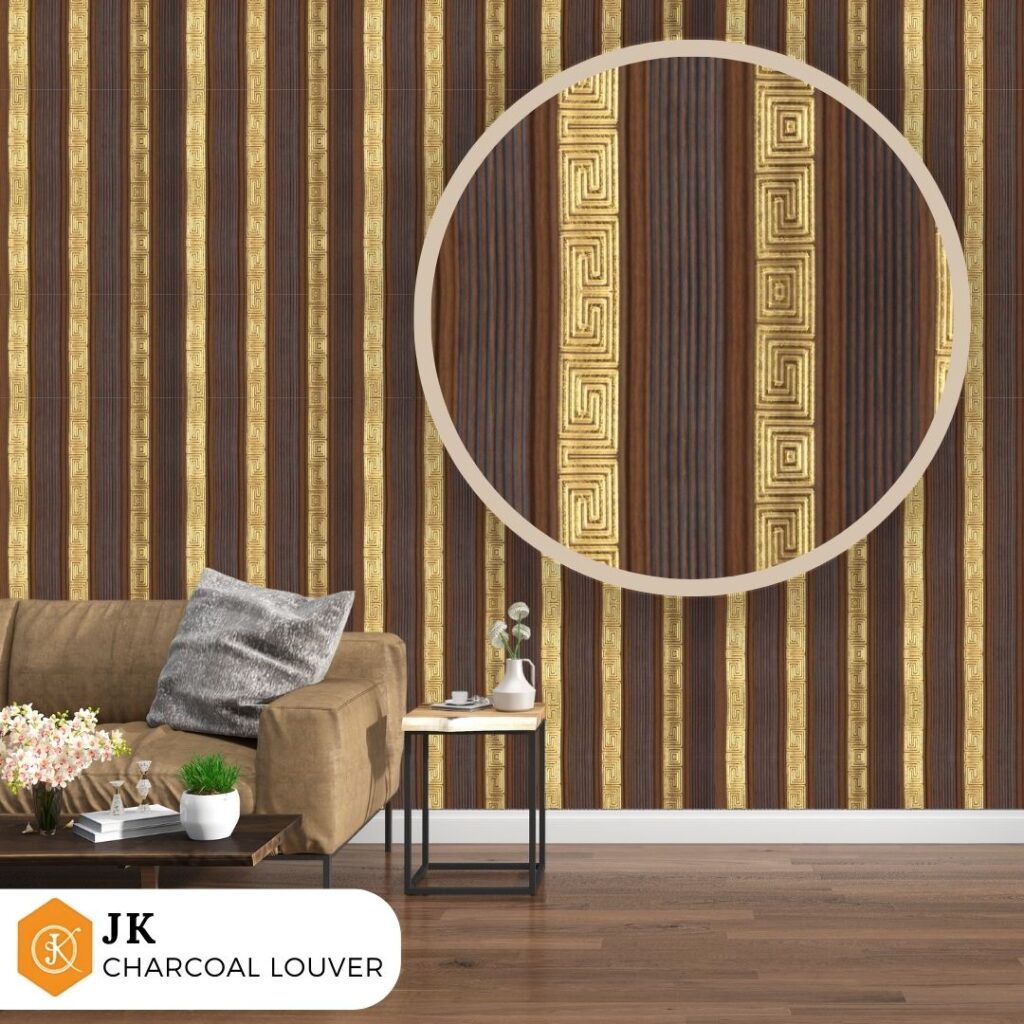
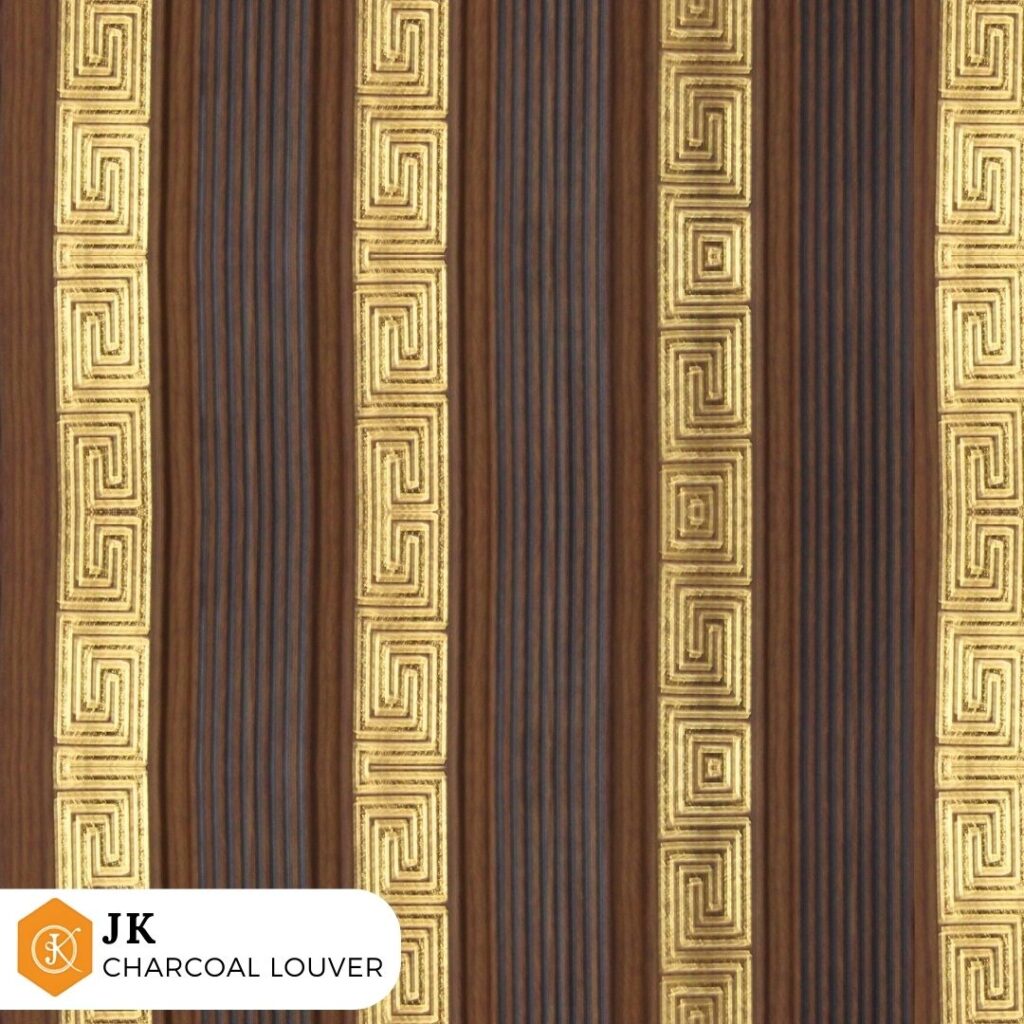
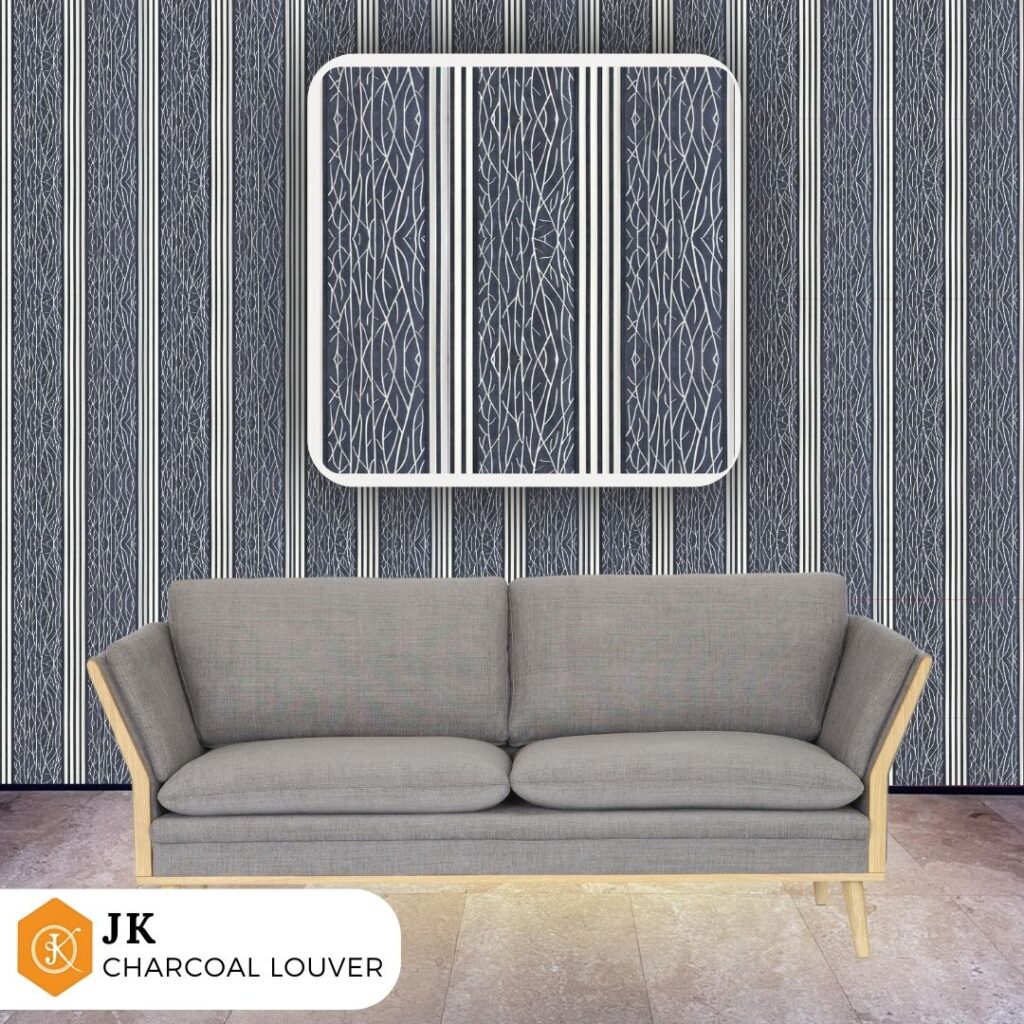
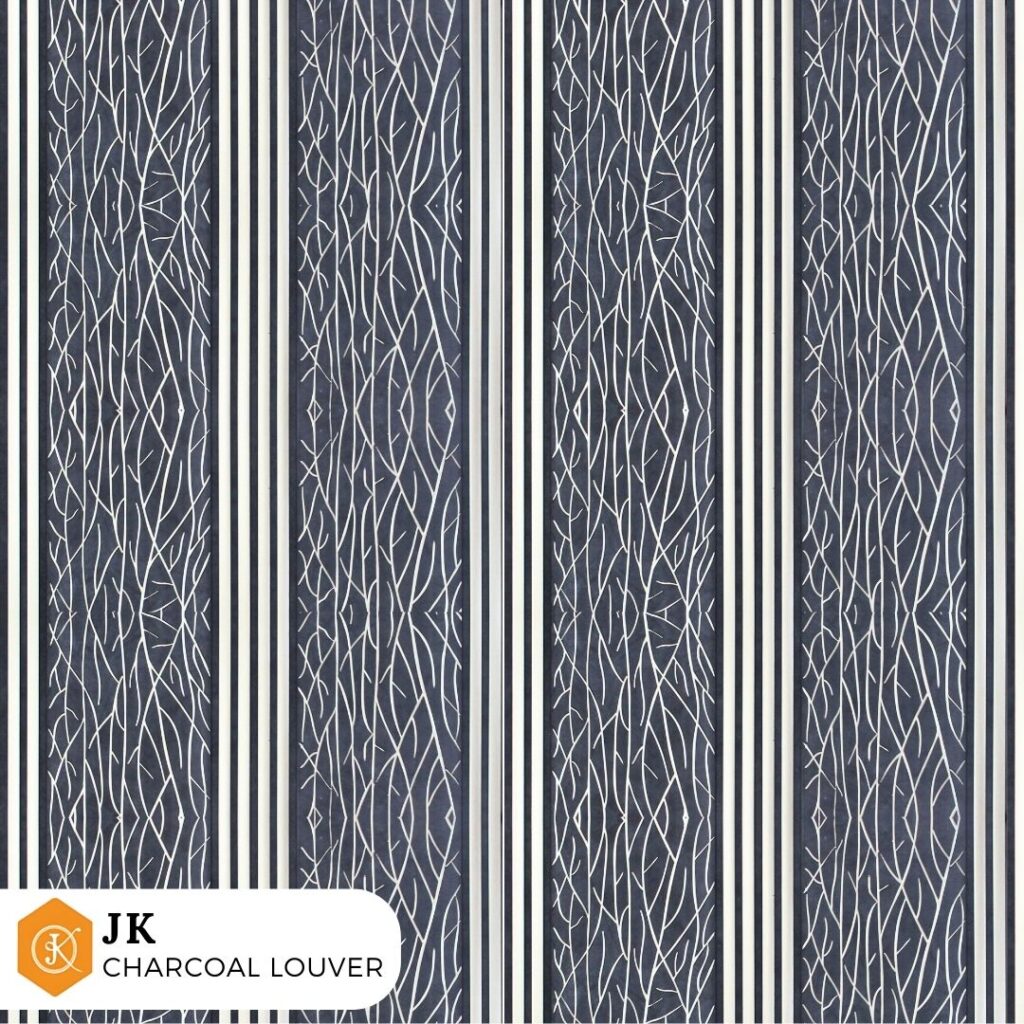
Conclusion
Charcoal louvers are a dynamic and innovative element in modern wall design. They combine functionality with striking aesthetics, making them a versatile choice for various architectural applications. Whether used for ventilation, light control, or purely decorative purposes, charcoal louvers enhance the character and performance of any space. By carefully selecting materials, designs, and applications, architects and designers can leverage the unique properties of charcoal louvers to create spaces that are both beautiful and sustainable.